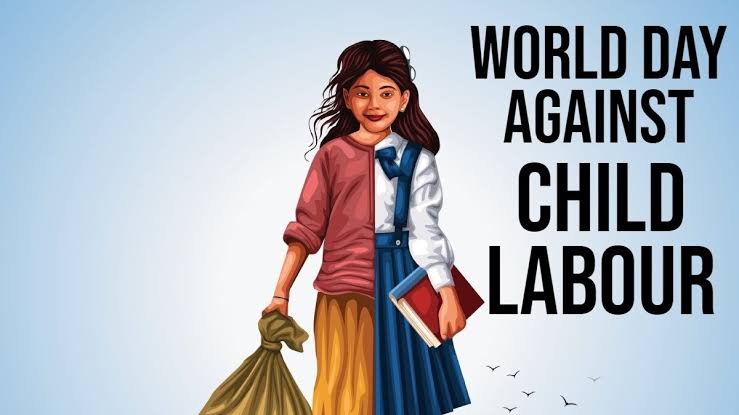Sandeep Dhand Ludhiana
Child labour is a persistent and heartbreaking global issue that undermines the fundamental rights of millions of children. Despite significant strides in economic development and international policies, the practice continues to thrive, predominantly in developing countries. According to the International Labour Organization (ILO), approximately 160 million children are engaged in child labour, with 79 million of them involved in hazardous work that endangers their health, safety, and moral development. The call to end child labour is not just a moral imperative; it is essential for sustainable development and the future well-being of societies.
Understanding Child Labour
Child labour is defined by the ILO as work that deprives children of their childhood, potential, and dignity, and that is harmful to their physical and mental development. It includes work that interferes with schooling and is mentally, physically, socially, or morally dangerous and harmful to children. Child labour is distinct from child work, which can be beneficial for learning responsibility and skills as long as it is appropriate to the child’s age and development and does not interfere with education and leisure.

Causes of Child Labour
The root causes of child labour are complex and multifaceted. Poverty is the most significant driver, forcing children into work to contribute to the family income. In many developing countries, educational systems are underfunded, and access to quality education is limited, particularly in rural areas. This lack of educational opportunities compels children to enter the workforce prematurely. Additionally, cultural attitudes and norms in some societies accept child labour as a part of life, further entrenching the practice. Other contributing factors include economic crises, natural disasters, and conflicts, which exacerbate vulnerabilities and push children into the labour market.
The Impact on Children
The consequences of child labour are devastating and far-reaching. Children engaged in labour often miss out on essential educational opportunities, which perpetuates the cycle of poverty. Without education, these children have limited prospects for decent employment in the future, reinforcing their socio-economic disadvantage. Child labour also exposes children to severe physical and psychological risks. Many work in hazardous conditions, handling dangerous machinery, toxic substances, or working in extreme weather conditions. This exposure leads to injuries, illnesses, and sometimes permanent disabilities. Psychologically, the strain of long working hours and the pressure to contribute economically can lead to severe stress, anxiety, and depression.
Global Efforts to Combat Child Labour
Numerous international frameworks and conventions aim to combat child labour. The ILO’s Minimum Age Convention (No. 138) and the Worst Forms of Child Labour Convention (No. 182) are pivotal in setting the legal foundations against child labour. Convention No. 138 stipulates that the minimum age for work should not be less than the age of completion of compulsory schooling, which is generally 15 years. Convention No. 182 targets the worst forms of child labour, including slavery, trafficking, and work that is harmful to the health, safety, or morals of children.
Additionally, the United Nations’ Sustainable Development Goals (SDGs) include a specific target (Goal 8.7) to end child labour in all its forms by 2025. These frameworks provide a robust legal and moral mandate for countries to eliminate child labour, yet the implementation and enforcement of these laws remain inconsistent.

Strategies to End Child Labour
To effectively combat child labour, a multifaceted approach is required. Firstly, addressing poverty is crucial. Ensuring that families have stable and sufficient income reduces the economic pressure on children to work. Social protection measures, such as cash transfers, can provide financial support to vulnerable families, enabling them to keep their children in school.
Secondly, improving access to quality education is vital. Governments and international organizations must invest in educational infrastructure, particularly in rural and impoverished areas. Education should be free, compulsory, and accessible to all children. Additionally, vocational training programs can offer older children and adolescents alternatives to entering the workforce prematurely.
Thirdly, raising awareness and changing cultural attitudes towards child labour is essential. Community-based programs can educate parents and community leaders about the detrimental effects of child labour and the importance of education. Media campaigns and advocacy efforts can also play a significant role in shifting public perception and norms.
Finally, strengthening legal frameworks and enforcement mechanisms is imperative. Governments need to adopt and rigorously enforce laws that prohibit child labour and protect children’s rights. This includes establishing effective monitoring systems and ensuring that violators are held accountable.
Conclusion
Ending child labour is a complex challenge, but it is achievable with concerted and sustained efforts. It requires a holistic approach that addresses the root causes of child labour, provides alternatives through education and economic support, and enforces legal protections. The commitment to ending child labour is not only about safeguarding the rights of children but also about building a more just, equitable, and prosperous world. By acting on our commitment, we can ensure that every child has the opportunity to enjoy their childhood, receive an education, and develop their full potential. The time to act is now; the future of millions of children depends on it.